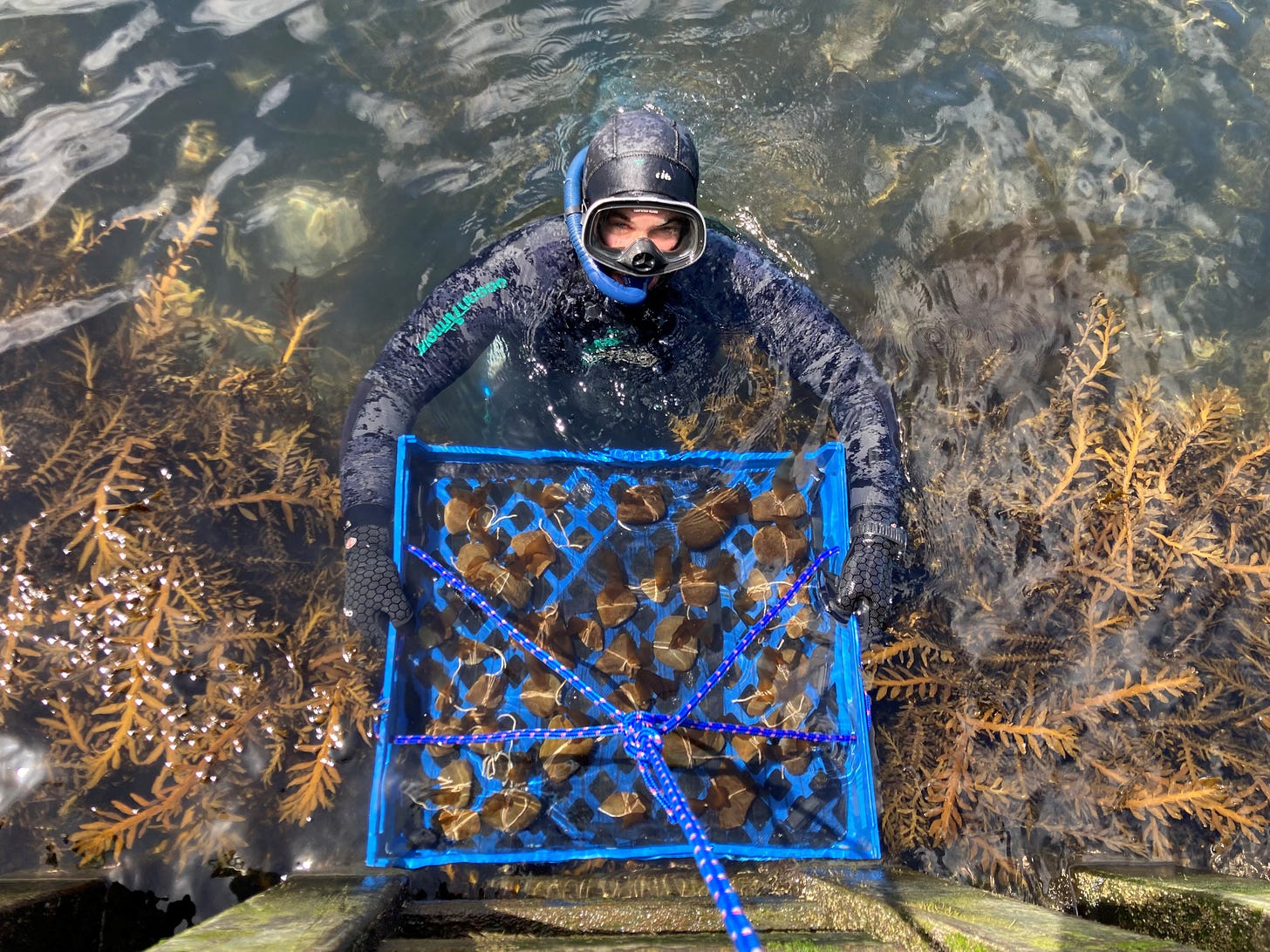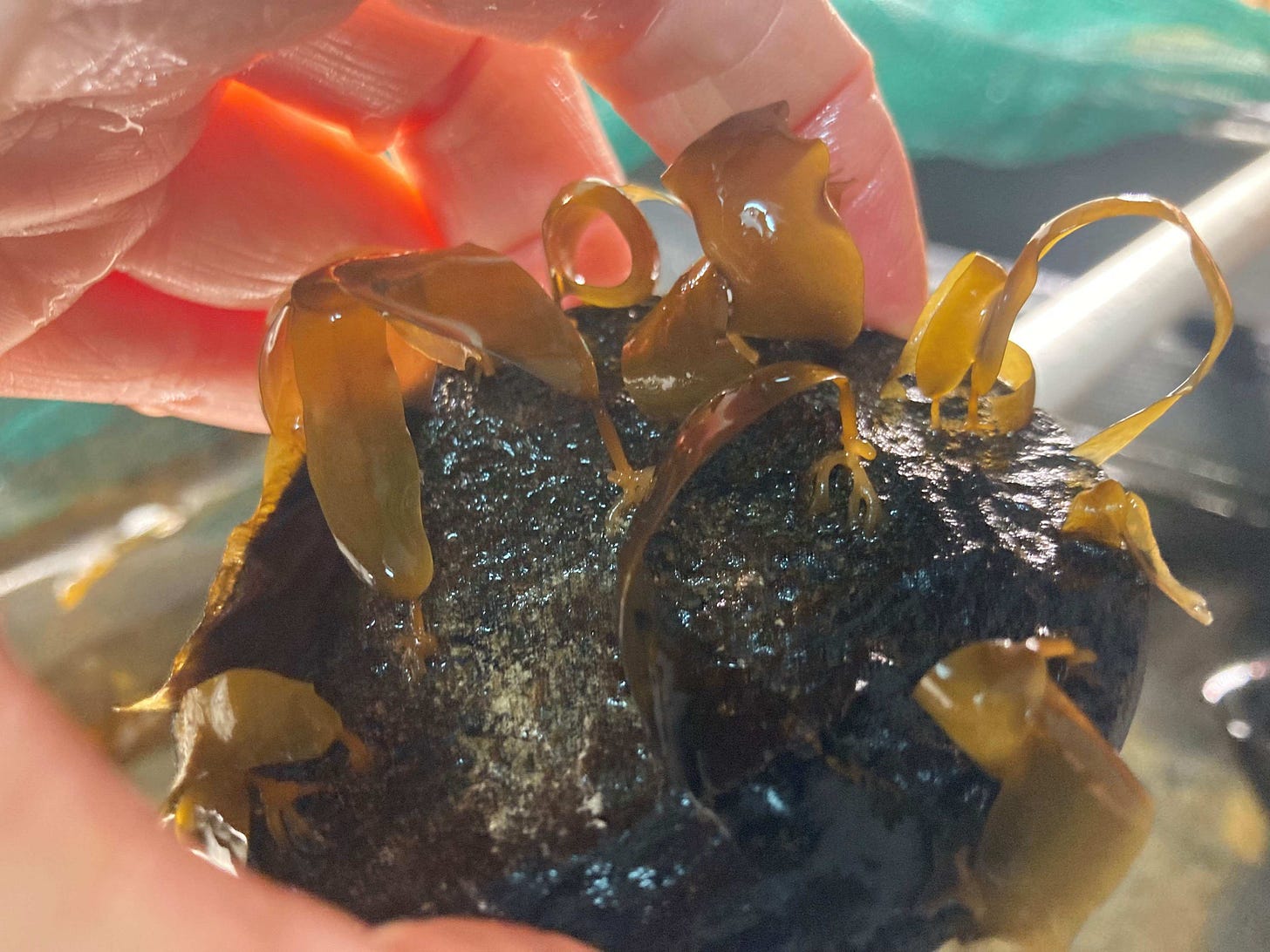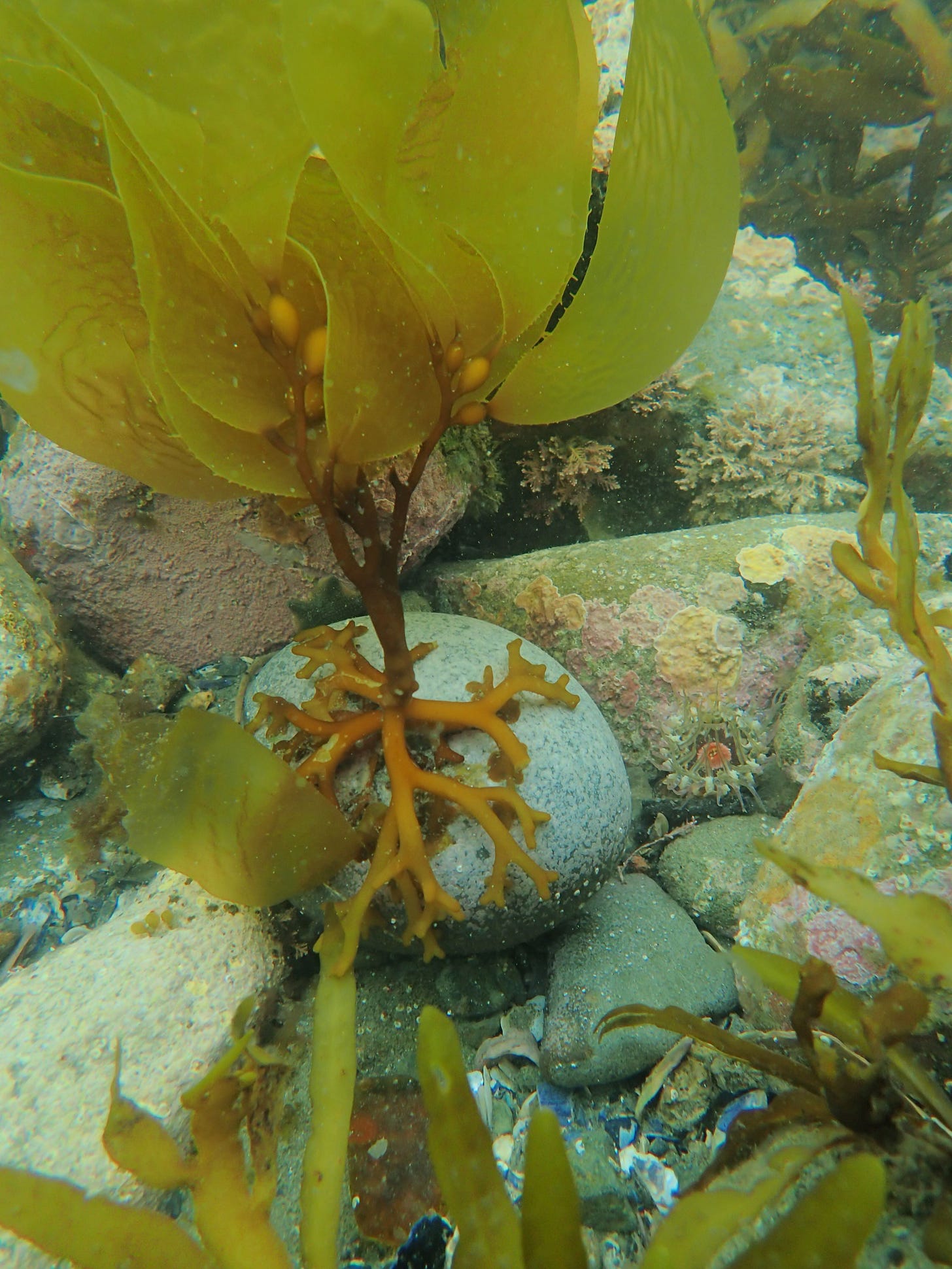I can still remember the first time I planted native trees. It was on Tiritiri Matangi Island and I was about 15. I’m showing my age here when I say that there was no regular ferry service back then. It was a grey, windy day and the boat pitched and heaved for the two hour journey. I lay on the deck, fighting sea sickness.
I was relieved to finally land. We walked up through a steep gully full of Australian wattles and I was puffed by the time we reached the windswept, overgrown pasture. Although the island contained a couple of tiny remnants of native forest, I didn’t see any of it. Nor do I remember any birds, although there were a few hiding in the gullies. When I think back, it’s hard to imagine the island without birdsong, knowing what it is like now.
I remember it being hard work to cut through the grass and compacted soil to dig a hole. My contribution was probably half a hole before I swapped to removing the seedlings from their pots, loosening their roots and putting them in the ground. But we were a big group, maybe a couple of dozen, and there was a satisfying patch of trees by the time we were done.
From 1984 to 1994, thousands of volunteers planted around 280,000 tree seedlings on Tiritiri Matangi. I made a couple more trips myself during that time, contributing a few more trees. The trees grew and the birds thrived, especially after rats were eradicated in 1993. Some birds were already on the island, some flew over from the mainland as the forest grew, and some were reintroduced from other island sanctuaries. Today, the island is a singing example of community involvement in restoration.
When tree planting began on Tiritiri Matangi, it was a controversial idea, both because the conventional wisdom was to allow the forest to regenerate naturally, and because it was unusual to involve the public in conservation work. Now, community involvement in conservation and planting native trees and shrubs to help forest regenerate are commonplace. I’m sure that many of you reading this will have planted a tree or two, or have been involved in a conservation project in some other way.
Decades of experience have taught us how to restore native forest, but other environments have had less attention. Beneath the surface of the water, climate change, overfishing, excessive sediment and pollution all mean that marine environments are in trouble. Can they be restored too?
That’s a question Zoe Studd, cofounder and Executive Director of Mountains to Sea Wellington asked herself. Zoe had long been fascinated by the sea. When I speak to her, she tells me about snorkelling at Mākara, near Wellington, with her father. “I remember swimming over a reef and this octopus was swimming along underneath us. It was one of those early moments where you think ‘What is going on down there?’ So that was a real spark for me.”
These early memories of the sea are part of what drives Zoe in her work. “I feel like lots of young people don’t get those experiences, and so the core piece of the work has always been how do we connect young people to the environment?” As well as helping community groups to monitor native fish in local streams, remove rubbish from waterways and plant trees, Mountains to Sea Wellington takes young people to explore the coast, including taking them snorkelling.
That got her thinking about marine restoration, and whether the approaches on land could be applied in Wellington Harbour, where kelp forests are in real trouble. So, Mountains to Sea Wellington set up the Love Rimurimu project, with the aim of restoring the kelp forest. “We started with going – how hard will it be to grow seaweed, surely it can’t be that tricky?” But seaweed is not like a tree at all, and it turned out to be far more difficult than she expected.
To understand why growing kelp is difficult, it helps to understand the life cycle. Most of us are familiar with the life cycle of a typical seed plant, for example a tomato which we might grow in the garden. Flowers need to be pollinated in order to produce fruit (a tomato) containing seeds, which grow new plants. In the case of tomato, pollen is carried by insects such as bees, but for some plants, such as pines and grasses, the pollen is carried by the wind. This is extremely simplified, but there is more information on the Science Learning Hub website here.
Seaweeds are not plants, even though they produce food from sunlight via photosynthesis, like plants do. Their life cycle looks quite different. First, the mature seaweed needs to grow a structure called a sorus, which releases microscopic spores into the water. These swim away from the parent using their tiny tails and find a crack or crevice in the rock to settle on. Or that’s what we assume happens in the wild – they are so tiny that they’ve seldom been seen outside the laboratory. While attached to the rock, these tiny spores grow a structure which then produces either eggs or sperm. The eggs stay on their little structure, but the sperm are released and swim away, looking for an egg, which they find by sniffing out its pheromones. Once the sperm finds an egg and fertilises it, the fertilised egg grows into a seaweed.
Zoe and her team worked with NIWA, the National Institute for Water and Atmospheric Research on the Love Rimurimu project. NIWA has seaweed scientists, because seaweeds are important and we need to study them, but the scientists were used to their work getting little attention. The Love Rimurimu project was something which got them really excited, and it’s the NIWA scientists who do the most technical work in propagating the kelp.
Zoe explains: “They go out snorkelling to collect the sorus of a mature adult plant. The sorus, where the spores are, looks like this grey, slimy patch, sometimes it’s a bit darker, sometimes it’s lighter on different species. All the species look different but for giant kelp, that fertile material is at the base of the seaweed. So that all gets collected and then it gets taken back to NIWA where it’s cleaned and dried and then it’s put between paper towels and put in the fridge and left overnight. In the morning they are taken out of the fridge and they are put back into water and that’s when they release all their spores. So then they’re swimming around and it can take quite a while, depending on the species and their process of reproduction, for them to settle and fertilise. That might take up to a couple of weeks.
“Once they get going, they get going quite fast. So in a two month period, they might get to a few centimetres long if all the conditions are right. Once they are at that size, they are ready for out-planting. So far, we have only done out-planting off the NIWA raft in Mahanga Bay in Wellington because they had a permit to be able to do that.”
The Love Rimurimu project has a number of collaborators – NIWA, Victoria University of Wellington, Taranaki Whānui (the collective of local Māori tribes) and schools including kura kaupapa (Māori language schools). One of the areas that the collaborators have helped with is working out the best substrate for the kelp to settle on. “We are thinking about what kinds of things we want to be putting back out into the marine environment. We don’t want a whole lot of plastic nets. We don’t want to add any more pollution back in. So we’ve got to figure out what they like to settle on that we can transfer out and over time will break down, like natural fibres, or something inert like a rock that came from that environment in the first place. We’re working with Taranaki Whānui – their weavers want to try harakeke and pingao and other natural fibres and this term the school we have involved with the project is going to be working with a weaver and trialling some of these. NIWA are testing an underwater concrete-type substance which will attach the rocks to the substrate so that we can figure out whether the rolling around of the rocks has an impact on the seaweed establishing.”

Victoria University are doing some important work too. “They’re going to do research with kina exclusion cages to see the actual impact of grazing, as opposed to all the other potential impacts. We know kina graze, but is kina grazing the thing that’s driving the decline in kelp? Is it the kina, is it the sediment, is it the temperature?”
Mountains to Sea Wellington has also trained people to monitor the kelp. “We’ve been running a training programme called The Kelpers. That builds free diving skills and monitoring skills. We work with community to go out and monitor current seaweed cover and the changes over time in our restoration sites. We’ve got a core crew of about six now and we’ll do some more training in the future. We’ve developed a whole marine monitoring programme for community to be involved in the project.”
One of the challenges of working under the water in Wellington Harbour is that activities like planting seaweed require resource consent, which took a lot of time and effort. Now they have it, but they’ve run into a problem. “This year, we are still waiting for the baby kelp to grow. We don’t know what the problem is but we suspect it’s probably the temperature and the conditions they’ve had to survive. There just doesn’t seem to be the fertility that we were expecting over the last few months.”
Zoe understands that a project like this, which is trying something so new, is always going to encounter problems. And she knows she’s not alone in discovering that seaweeds are difficult to grow. “We’re part of a global group, it’s called the Kelp Forest Alliance and everyone has pledged to try and do seaweed restoration. It’s incredibly tricky. Everyone is trying it in different ways and everyone is running into a whole range of different challenges.”
When I compare the work that Zoe and her team have had to do with the restoration of Tiritiri Matangi or Matiu/ Somes, I realise that restoring the kelp forests of Wellington Harbour is a long way away. It took a couple of decades for community-led restoration planting on land to go from bold dream to prevailing wisdom. Love Rimurimu has only been going a couple of years and they still haven’t worked out the finer details of propagating and planting out the kelp.
But without these bold dreams, and the people who dream them and then make them happen, environmental restoration in New Zealand would have gone nowhere. We wouldn’t have eradicated rats from islands. We wouldn’t have built predator fences and brought endangered birds back to the mainland. We wouldn’t have community groups doing predator control from one end of the country to the other or have brought rare birds like the kākā back to the Wellington City. Zoe’s another one of these bold dreamers, and I believe she’s the kind of person who can make it happen. I’ll leave the last words to her.
“It’s a big project to wrangle, it’s complex, it happens at every level from trying to influence decision makers all the way through to inspiring young people to care about that slimy thing in the water that they probably aren’t that interested in. I kind of love the complexity and also sometimes I pull my hair out about it. But that’s also the joy in it, when you see all those pieces fitting together.”
Since I interviewed Zoe, she and her team have managed to get enough baby kelp to grow, and they’ve planted out more than 300.
You can find out more about Zoe’s work on the websites for the Love Rimurimu project and Mountains to Sea Wellington.
If all this talk of seaweed has made you want to jump in the water, but you can’t do that right now, check out these underwater videos.









I had no idea seaweed was a living creature with kelp sperm. I learn so much from you. How long will it take for the seaweed to become “adults?” Great interview. You seamlessly wove Zoe’s knowledge into this article.
That photograph by Zoe of the thriving young kelp is stunning .
Such admiration for this sort of work ,enthusiasm and having the dream in the first place . Thanks.